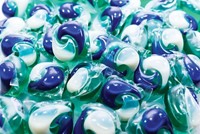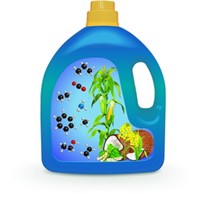Advertisement
Grab your lab coat. Let's get started
Welcome!
Welcome!
Create an account below to get 6 C&EN articles per month, receive newsletters and more - all free.
It seems this is your first time logging in online. Please enter the following information to continue.
As an ACS member you automatically get access to this site. All we need is few more details to create your reading experience.
Not you? Sign in with a different account.
Not you? Sign in with a different account.
ERROR 1
ERROR 1
ERROR 2
ERROR 2
ERROR 2
ERROR 2
ERROR 2
Password and Confirm password must match.
If you have an ACS member number, please enter it here so we can link this account to your membership. (optional)
ERROR 2
ACS values your privacy. By submitting your information, you are gaining access to C&EN and subscribing to our weekly newsletter. We use the information you provide to make your reading experience better, and we will never sell your data to third party members.
Environment
Treading Lighter
L'Oréal is increasing its commitment to sustainability when developing new ingredients
by Lisa M. Jarvis
March 1, 2010
| A version of this story appeared in
Volume 88, Issue 9

When the French beauty giant L'Oréal considers launching a new product, it has always sought to fulfill characteristics such as safety, innovation, and performance. In recent years, that list has been expanded to include sustainability. Pictures of a preening frog around L'Oréal's ecotoxicity lab have a caption that illustrate the goal: "On peut être vert et beau," or, "We can be green and beautiful."
The effort around sustainability coincides with growing pressure from European regulators to provide clear information on how raw materials affect the environment. The Registration, Evaluation, Authorization & Restriction of Chemical substances (REACH) program, initiated in Europe in 2006, requires companies to provide toxicology data on thousands of chemicals. For cosmetics makers such as L'Oréal, that has meant retrospectively testing ingredients and products in development to ensure that they are safe to consumers and that they don't stick around in the environment once they are used.
When assessing the environmental impact of a raw material, L'Oréal looks at five characteristics, says Marc Leonard, who is in charge of ecotoxicity testing at the company's R&D facility in Aulnay, France. As always, consumer safety is paramount. But the company also looks at an ingredient's impact on the environment, how harvesting could impact biodiversity, fair trade in natural ingredients sourcing, and the social impact of sourcing an ingredient from an indigenous population.
"From a regulatory standpoint, 100% of raw materials go back into the environment after they are used by a customer," Leonard says.
To truly understand where a sunscreen, for example, ends up, L'Oréal scientists must consider the circuitous route it takes from store shelves to the nearby ecosystem. They then must assess whether small levels of an ingredient can disrupt the sophisticated microbial systems in sewage treatment facilities or whether a swimmer wearing a new sunscreen can contaminate a lake.
Algae are the most sensitive components of an aquatic environment, so L'Oréal begins by testing the impact of a new ingredient or formulation on them. The process is more complicated than it sounds. Because many substances used in cosmetics contain ingredients that interfere with light, biomass can't be measured with fluorescence, the most straightforward tool. Instead, a researcher has to count algae under a microscope to determine whether they are losing numbers after being exposed to a product.
If an ingredient passes muster in algae, it then is used in more complex systems: first daphnid, known more commonly as the water flea, then zebrafish.
Ecotoxicity is critical for L'Oréal, but it is not always understood by consumers. A growing number of consumers are demanding that their personal care products be biodegradable. This is an admirable quality, but as Leonard points out, an ingredient that biodegrades is not guaranteed to be safe. "We don't care if a product doesn't degrade in one month if it kills everybody in a river in two days," Leonard points out.
L'Oréal has assessed more than 97% of its own raw materials, Leonard says, and the company is now looking at those it sources from other suppliers.
As another way of softening its impact on Earth, L'Oréal is trying to make its manufacturing processes more efficient, says Michel D. Philippe, green chemistry manager at the Aulnay site. When considering a new raw material, either discovered in its labs or sourced externally, the company measures its "E factor"—the waste generated per kilogram produced. If the number comes up too high, L'Oréal tries to come up with an alternative synthesis to lessen the environmental impact.





Join the conversation
Contact the reporter
Submit a Letter to the Editor for publication
Engage with us on Twitter